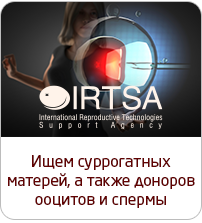Scientists take a step towards curing infertility with stem cells
Stem cells are basically like biological alchemy. You can turn them in to almost anything, including it seems sperm or eggs. Researchers working jointly in the UK and Israel have figured out how to create precursor cells for gametes, you know the bits that combine during fertilization to create a tiny human. There's still a long way to go before viable eggs or sperm can be created in a petri dish, but this is a major first step. The hope here is that one day couples where either partner (or both) suffers from infertility could have a child. The process would obviously still be involved and difficult for the couple, much like in vitro.
The next step is to introduce the precursor cells into the ovaries and testes of mice to see if they develop into eggs and sperm properly. (Obviously this would be done with stem cells from mice, and not humans.) But there's also the issue of getting the cells to combine properly to create an embryo. This could prove the most problematic part of the research. In the US, and in many other countries around there world there are strict laws restricting the creation of human embryos for research purposes. Even if that restriction is simply a lack of federal dollars, it could pose an almost insurmountable hurdle.
Source: Nature
- The central office of IRTSA Ukraine completely restores work
- How we work during the COVID-19 pandemic
- 1st International Congress on Reproductive Law
- Soon Americans may face a new ethical dilemma
- ‘Friends’ star Jennifer Aniston is pregnant with twins
- Image processing technology can impact the success rates of ivf
- Editing genes of human embryos can became the next big thing in genetics
- Supermodel Tyra Banks undergoes IVF
- Scientists discovered a new, safer way for egg freezing
- French scientists have managed to grow human sperm cells in vitro









